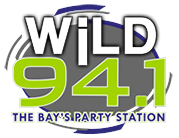“Going downtown back then was like going to NY with all the lights, the buildings,” said Brazilian artist Mano Brown in the 2022 documentary Racionais MC’s: From the Streets of São Paulo.
In the 1970s, Brown was only known as Paulo, a teenager from one of the harshest favelas at the outskirts of the 20 million person Brazilian metropolis. Then taking baby steps into hip-hop — a brand new form of music-making — Brown could barely imagine becoming one of the most relevant figures in national culture. Nor would he dare to say that Brazilian hip-hop would go big on a global level.
There are three new categories at the 2023 Latin GRAMMYs, the inaugural award for Best Portuguese-Language Urban Performance. Among its nominees are two mainstays of Brazil’s hip-hop today: the ’90s rap-rock staple Planet Hemp’s collaboration with São Paulo sambista-rapper Criolo, “Distopia”; and Rio trapstars Filipe Ret and Luccas Carlos, along with top-tier producer Dallas, featuring “Good Vibe.”
Brazilian hip-hop has walked a long, rocky road from the tough favelas and skyscraping downtowns to the 2023 red carpet in Seville, which will host the 2023 Latin GRAMMYs on Nov. 16. It’s a story of many acts, a wide range of beats, clashes with the establishment and Black pride, genre-hopping creativity, and unstoppable endurance. As with samba and funk, innovative artists reinvented and reshaped the culture of hip-hop, claiming it as their own.
Follow through the decades of Brazilian hip-hop’s rise and and press play on some hallmark song from the country’s artists below:
1960s -1970s: Spoken Word, Proto-Rap & Local Influence
It’s undeniable that those kids in the Bronx in the late 1970s were the first to create a music genre out of a given prosody, spoken word traditions, double-entendres, displaced rhymes, and wordplays. All of these features, however, can be found across several disparate cultural practices. In Brazil, these were seen in Northeast repente practice, and also in samba or marchinhas — century-old songs chanted during carnival street parties.
One of the first popular Brazilian artists to record a song drawing from these elements is Jair Rodrigues. With his “Deixa Isso Pra Lá,” the singer playfully jams with a staccato pattern following the broken beat rhythms of the samba ensemble. Other notable examples of this avant-garde era are Gerson King Combo and his funky “Mandamentos Black” and Miele, who recorded a parody of Sugarhill Gang’s “Rapper’s Delight.”
1980s: Roots In Rio And São Paulo
By the late 1970s, the most populated cities of the country, Rio and São Paulo, witnessed the growth of favelas and low-income suburbs that eventually became essential hubs for Black-centered cultural practices. There, American funk music was highly appreciated and James Brown records were a must for DJs playing the massive parties that took place in local sports courts over the weekend.
Brazilian hip-hop evolved in this landscape, and was first compiled by a Brazilian major in 1988 on Hip-Hop Cultura de Rua. Thaíde was one of the main acts on the compilation; the young rapper and b-boy was often seen at the square in front of the São Bento — the central metro station that gathered these new aficionados.
Joining the ranks were Região Abissal, a group that recorded the first album of Brazilian hip-hop, 1988’s Hip rap hop, and the Black Juniors, whose 1984 album Break melded funk, electro, and the country’s burgeoning rap style.
1990s: Rap Rises Against All Odds
The 1990s laid the foundations of hip-hop in Brazil. The country kicked off the decade with its first presidential elections since 1960, following a three-decade hiatus of military dictatorship. Freedom of speech was the norm once again, and the racial and social fracture faced by underprivileged populations was moore palpable than ever. In this context, rappers used music as a manifesto, bluntly denouncing the daily racism and violence experienced by Black youth.
There’s no other group or artist that captured that zeitgeist as Racionais MC’s did, coining all-time classics of Brazilian music such as “Diário de um Detento” — the story of an imprisoned man killed during a massacre that took place in the Carandiru correctional facility in 1992. Their albums Holocausto Urbano (1990), Raio X do Brasil (1993), and Sobrevivendo no Inferno (1996) are revered masterworks. Racionais MC’s shaped rap during a decade that also saw Planet Hemp’s first album, Usuário (1995), and Bahia duo MD MC’s recording a music video in New York — a first for Brazilian hip-hop artists.
2000s: Hip-Hop Culture Continues To Grow
Brazilian hip-hop kept a steady pace throughout in the early aughts. In 2000, Sabotage’s Rap é Compromisso set a higher bar for storytelling and wordplay, earning the rapper national acclaim. Female artists such as Dina Di and Negra Li also became more vocal, claiming space despite a constant misogyny that often made performing or recording a tough task.
All over the country, different regions and artists appropriated that new sound, proving that São Paulo was not the only hip-hop antenna. In the national capital Brasília, Gog released four albums, following five other releases in the ’90s; in Salvador, Vandal, Lord Breu, and Dimek linked up with the UK hip-hop and grime scene on their mixtape Fayaka Stepaz; in Fortaleza, the group Costa a Costa debuted in 2007 with the seminal mixtape Dinheiro, Sexo, Drogas e Violência; Rio’s MV Bill released his sophomore album Declaração de Guerra (2002), and Black Alien showed off his complex, multi-punchline Babylon by Gus Vol. I: O Ano do Macaco (2004).
Early 2010s: Hip-Hop Becomes MPB
Although hip-hop was inescapable in Brazilian music throughout the 2000s, it was still overlooked by the media and music industry; rap was still seen as an underground fad and a combative platform that had no place in most TV channels or radio stations.
This started to change in the early 2010s. With a background in street rap battles and performances at underground venues, São Paulo’s Emicida and Criolo took a place among the big sharks, showing off their skillful music-making and bending boundaries of hip-hop. In just a few years, they released songs that made the radio charts, collaborated with major Brazilian artists such as Caetano Veloso and Milton Nascimento, and performed at several festivals.
With their 2009 mixtape Pra Quem Já Mordeu um Cachorro por Comida, até que Eu Cheguei Longe…, Emicida proved how universal and still local his rap could be, writing about love and self-care while still denouncing the challenges faced by Brazil’s Black population.
Criolo’s Nó Na Orelha (2010) snuck rap into the MPB, featuring the sad, larmourous song “Não existe amor em SP” and the Afrobeats-laden jam “Bogotá.”
Not by chance, Emicida and Criolo were the first Brazilian hip-hop artists amongst the Latin GRAMMYs nominees. Criolo is nominated for this year Best Portuguese Language Song for “Algoritmo Íntimo” at the 2023 Latin GRAMMYs, and Emicida won the 2020 Best Portuguese Language Rock Or Alternative Album, with Amarelo.
Late 2010s: Hip-Hop To The People
Criolo and Emicida’s national success echoed that of American artists, and informed the country’s appreciation of hip-hop. Brazilian underground rap grew stronger in the second half of the 2010s, which saw the first massive wave of young hip-hop fans.
This period also saw the rise of trap music made in Brazil via the likes of Raffa Moreira, who managed to adapt and expand the Atlanta-based formula of triplets and snare rolls in his own style.
Crews were also on the top then: Costa Gold, Recayd Mob, and Nectar Gang are some of the collectives who laid the groundwork for artists such as BK and Jé Santiago. In 2018, Minas Gerais’ Djonga released his first album, Heresia — his first step on the path to Brazilian rap stardom. Up in the Northeast region, Bahia’s Baco Exu do Blues collabs with Pernambuco’s Diomedes Chinaski and releases “Sulicídio” — a powerful jab to the Rio/São Paulo-centered hip-hop Brazilian scene.
Early 2020s: Brazil Becomes A Hip-Hop Powerhouse
Blending with different genres, but especially branching out of trap, the rap game got big in the beginning of this decade. Fortaleza’s Matuê became one of the biggest stars in Latin America, amassing millions of streams, while pop act and Latin GRAMMY/GRAMMY nominee Anitta collaborated with up-and-coming MCs like L7.
Spearheaded by Filipe Ret, trap began to meld with baile funk in Rio and São Paulo. Meanwhile, Marcelo D2’s Planet Hemp joined forces with Criolo to revamp their rap rock. Not by chance, both acts are among the first list of rappers nominated for the Best Portuguese-Language Urban Performance.
Female artists such as Tasha and Tracie, Nina do Porte, Nic Dias, and Ajuliacosta are keeping the pace and the memory of pioneers, but now they rise as innovators. LGBTQ+ performers like Rico Dalasam, Mona Brutal, and Sodomita are also taking centerstage, pushing aside homophobia and dropping bars about topics that cover queerness and much more.
Grime and drill also see the day of light by the hands and pens of SD9, Leall, Fleezus, and Febem. Rap seems unstoppable now, in every corner of every big Brazilian city. From north to south — and now going global — hip-hop reigns supreme in Brazil.
This post was originally published on this site be sure to check out more of their content.








